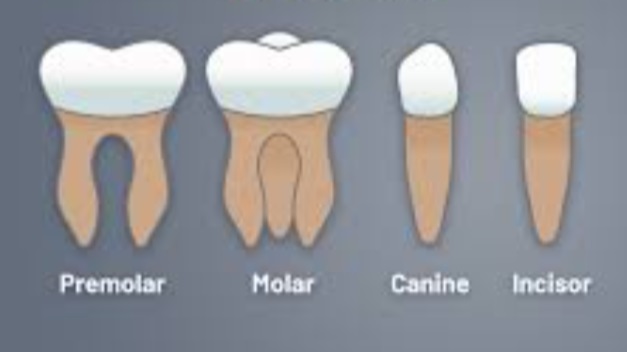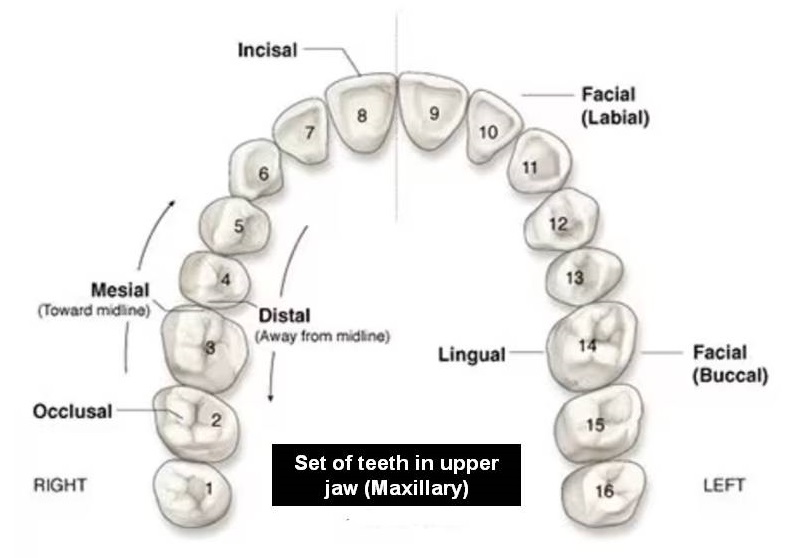Oral Health Tips for African Children
By Ibironke Taiwo. BNSc., RN. Freelance Health Writer. Medically reviewed by: Aisha Rahat Ysameen, BDS.

Young black father teaching son toothbrushing in the bathroom. Image credit: Freepik
Oral health is like a window to overall health [1]. The mouth opens to the digestive system and respiratory tract. Just like every other part of the body, the mouth contains germs which are harmless when kept under control with good oral practices.
Poor oral health may cause the harmless germs in the mouth to travel down to the digestive system or respiratory tract causing diseases throughout the body. Also poor oral hygiene may cause severe dental infection in children.
Strong teeth and good oral health are the foundation for a child's future. But in many African communities, access to dental care is limited. So, what measures can you take as a parent to ensure good oral health in your child? This blog will provide you with accurate and valuable answers to this question.
Fig. 1: Basic dental anatomy. Click on image to enlarge.
The dental anatomy consists of three basic structures of the tooth, classified by their functions [2].
Each tooth has a crown and a root with tissues embedded in them (see fig. 1). Dental anatomy also describes the dental surfaces which are used to indicate the positioning of the teeth in the mouth.

Fig 2: Types of teeth roots
This is the portion of the tooth hidden below the gum (gingival) and embedded in the jaw bone (alveolar bone). It is covered by the cementum, one of the tissues of the tooth (see fig. 1). Three categories of roots occur and are found in different tooth locations in the mouth (see fig. 2). The three categories are:
The crown is the visible part of the tooth covered by the enamel. It is marked by different surfaces (see fig.3) that include:

Fig 3: Surfaces of teeth, upper jaw. Click on image to enlarge. here
The root and crown are joined at the cementoenamel junction also known as cervical joint or neck
The tooth is made up of 3 hard tissues and a soft tissue. The hard tissues are the enamel, dentin and cementum while the soft tissue is called pulp (see fig. 1).
Enamel, the hardest tissue in the body, is the outer layer of the tooth. It is semi transparent and reflects the colour of the dentin.
Dentin is a clear cross section capsule of the tooth that separates the hard outer tissue (enamel) from the soft and fragile pulp cavity.
Cementum is calcified tissue covering the root of the tooth. It holds the tooth within the jawbone providing a surface for periodontal ligament fibers to attach.
Pulp is the soft tissue of the tooth found in the pulp cavity which consists of the pulp chamber and the pulp canal. It is an essential component of the tooth, housing the nerves, blood vessels, and connective tissue. The nerves, blood supply and connective tissue helps to detect sensations, supply nutrients and defend the tooth against bacteria respectively.
Oral health diseases are the most common of diseases globally and regionally. According to the WHO, oral health diseases affected 480 million people (43.7%) in the WHO African Region in 2019. The low socioeconomic populations are usually affected more. They carry a high burden of oral health disease from childhood to older age due to lack of preventive dental check-ups. The following are some common oral health diseases in children.
The following are some oral diseases that are common in African children (see fig 4).
Fig. 4: Common oral diseases in the African region. Credit WHO.
This can also be referred to as cavities. It is the most chronic disease in children. A 2019 report showed that 38.6% of children aged 1 to 9 in Africa had untreated cavities in their baby teeth.
Dental caries occur due to the formation of germ (microbial) film on the tooth surface. This film turns sugar to acid dissolving the enamel and dentin, thereby causing holes in the teeth. Lack of oral hygiene and inadequate fluoride can make it worse.
Periodontal (gum) disease is marked by swollen, painful, or bleeding gums and bad breath. It is commonly caused by poor oral hygiene in children. When severe, the teeth can come off from the gum and supporting bone and become loose. The WHO estimated that 22.8% of persons aged 15 years or more in the African Region suffered from severe periodontal (gum) disease that may cause tooth loss in 2019.
Injury to the teeth and/or other hard and soft tissues of the mouth is common. They can arise from a wide range of causes, including injury from the use of tooth-picks and during hard brushing of teeth, interpersonal fights, road traffic injuries, or accidents in the home, school, or workplace. Common effects include chipped, broken, or lost teeth, dislocated jaws, and fracture of the bones of the face and jaws.
African children are also victims of HIV/AIDS and therefore suffer from oral complications of this disease. According to WHO, lesions in the mouth occur in 30–80% of people with HIV, depending on several factors that include access to standard antiretroviral therapy (ART).
Common germs that cause oral infections generally in people living with HIV include fungal, bacterial, or viral. Oral candidiasis is the most common and often the first symptom early in the course of the disease.
Oral HIV lesions cause pain, discomfort, dry mouth, eating restrictions and are a constant source of opportunistic infection.
Early identification of HIV-related oral lesions can serve as a window for the diagnosis of HIV infection, monitoring of the disease’s progression and treatment response, and prediction of immune status.
The treatment and management of oral HIV lesions can considerably improve oral health, quality of life and well-being.
This is a congenital abnormality where babies are born with a gap in their lips or the roof of their mouth. It affects 1000 - 1500 newborns worldwide. It is usually as a result of a complex combination of genetic and environmental factors like, nutritional deficit, exposure to smoke and smoking during pregnancy and maternal infections during pregnancy for example.
This is a non-infectious gangrenous disease that affects mostly children between 2 to 6 years old. It starts as a soft tissue lesion in the gums and quickly develops to ulcerative necrotizing gingivitis, destroying the tissues of the face. It is often linked to malnutrition, infectious disease, low socioeconomic status, and weakened immune system. It is more common in sub-Saharan Africa. The good news about Noma is that if detected early it can be taken care of with basic hygiene, antibiotics, and nutrition
Oral health is a cornerstone for well being. Although oral diseases are not life threatening, they can cause pain, discomfort, difficulty in sleeping & smiling, limitation in socializing and absence from school [3]. It may also keep parents away from work as they stay with their child while undergoing care at home or in the hospital.
To prevent these consequences, it is better to give priority to your child’s oral health right from their young age.
Challenges such as limited access to healthcare, lack of awareness and socioeconomic factors may hinder effective oral health in African children.
With population based oral health campaigns, oral health initiatives in schools & community, increased availability of dental professionals and integration of oral health into national policy, the challenges of oral health care in African children can be significantly eradicated.
The following are essential daily oral hygiene tips and practices recommended for African children. They would help improve their dental health and well being.
Regular dental checkups are important for African children for the following reasons [4]:.
Some oral issues can occur without pain or discomfort. They can be so hard to detect without professional examination.
Making oral health a priority in children is more of an investment in their future well being. Consistent practice of oral hygiene and regular dental checkups are ways to achieve good oral health in your African child. above. Oral hygiene practices have to be instilled in children right from an early age. This will help them to maintain good oral health into adulthood and prevent dental issues.
Schools, community, parents and government owe the African child a duty in ensuring that every African child has access to education and care needed to achieve a lifetime of healthy teeth that beams confident smiles.
1. Kelsey (2018). Oral health - a window to your overall health. [Internet]. [Cited 2025 Mar 6]. Available from here
2. Kenhub. Anatomy of the tooth. [Internet]. [cited 2025 Mar 6]. Available from here
3. Barnardo’s. Why your child’s oral health is so important. [Internet]. [Cited 2025 Mar 6]. Available from here.
4. Shomuyiwa, D. O., & Bridge, G. (2023). Oral health of adolescents in West Africa: prioritizing its social determinants. Global health research and policy, 8(1), 28. doi:10.1186/s41256-023-00313-2. Available from here.
5. Ramphoma, K., Rampersad, N., Singh, N., Mukhari-Baloyi, N., & Naidoo, S. (2022). The proposed need for integrated maternal and child oral health policy: A case of South Africa. Frontiers in oral health, 3, 1023268. doi: 10.3389/froh.2022.1023268. Available from here.
Dental care in Africa: Challenges and solutions
Published: March 29, 2025.
© 2025. Datelinehealth Africa Inc. All rights reserved.
Permission is given to copy, use and share content for non-commercial purposes without alteration or modification and subject to source attribution.
DATELINEHEALTH AFRICA INC., is a digital publisher for informational and educational purposes and does not offer personal medical care and advice. If you have a medical problem needing routine or emergency attention, call your doctor or local emergency services immediately, or visit the nearest emergency room or the nearest hospital. You should consult your professional healthcare provider before starting any nutrition, diet, exercise, fitness, medical or wellness program mentioned or referenced in the DatelinehealthAfrica website. Click here for more disclaimer notice.